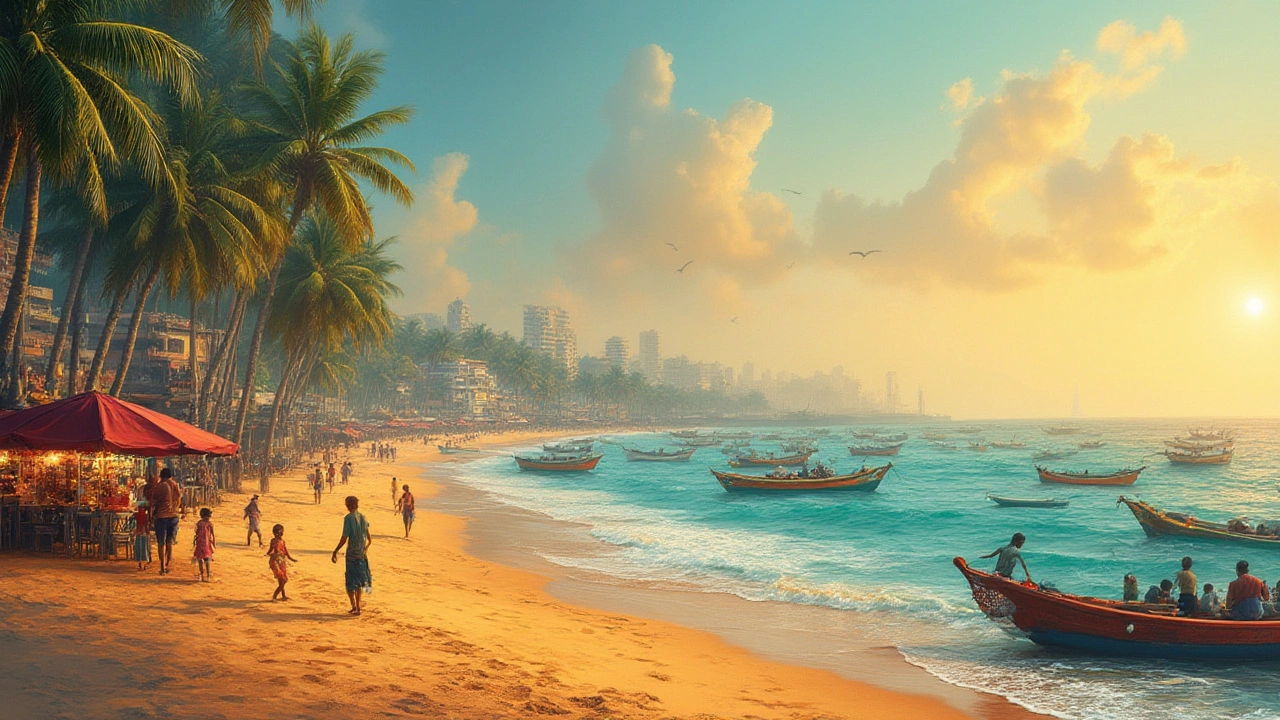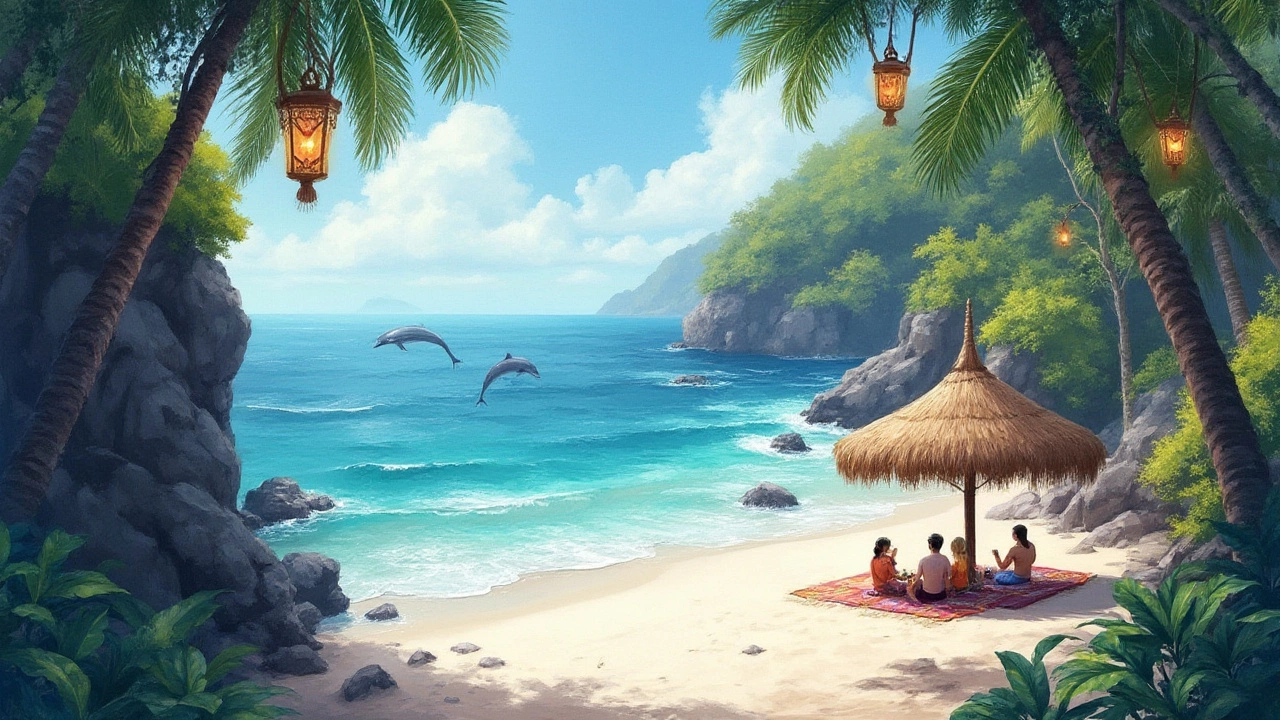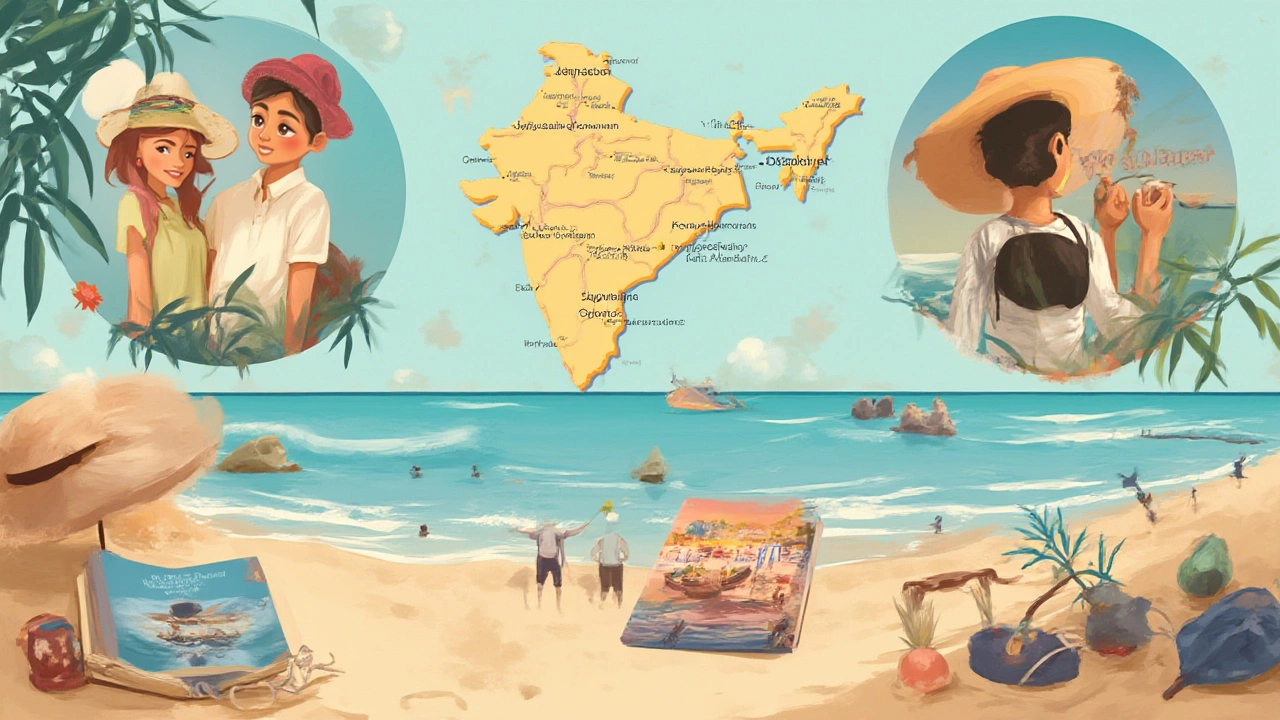India’s Most Beautiful Beaches: Top Cities for Sun, Sand, and Scenic Views
 Jul, 22 2025
Jul, 22 2025
The truth is, talking about India's beaches stirs up endless debates among travelers, surfers, honeymooners, and that one local who swears by his secret stretch of sand. Most people picture sun loungers and neon shacks in Goa, but India’s coastline is ridiculously long—over 7,500 kilometers. Tucked into it are buzzing cities, tiny fishing villages, and tropical paradise after tropical paradise. So, which city has the most beautiful beaches in India? You'd think it's a quick answer. It really isn’t. Some cities have turquoise water and white sand that look straight out of a travel magazine. Others vibe with wild cliffs, silky sunrise swirls, and coves you reach by climbing over rocks with curious monkeys tagging along. This isn’t one of those ‘here’s a top three, thanks for reading’ kind of stories. I’m pulling on my personal favorites, plus what I’ve picked up from stubbornly chatty locals, surfer girls, and a fair amount of wanderlust-induced Googling at midnight. Ready to get salty?
Goa: The Icon for Indian Beaches
Let’s not skirt around the cliché: Goa is usually the first answer you’ll hear. People talk like it’s one big sun-drenched postcard, but Goa is a state stuffed with coastal contrasts and beach-towns that somehow keep their individual personalities. Panaji is the capital, yet you’ll hear about bustling Calangute, quirky Anjuna, upmarket Candolim, and dreamy Palolem beach towns. Why does Goa top so many lists? For starters, it’s got a wild coastline stretching more than 100 kilometers along the Arabian Sea. The sand here ranges from gold to honey-brown, and occasionally you’ll stumble on sparkling white strips washed up by river currents. If you’re the party-all-night type, Baga is ground zero, with packed clubs, fancy restaurants, and jet skis buzzing around by day. Step aside from the noise and you’ll find hidden gems: butter-soft Agonda Beach, popular with people looking for a quiet sunset swim, or Arambol, where morning yoga battles it out with late-night drum circles.
What’s surprising is just how international the crowd can be. Russians and Brits flock here in winter, with some restaurants offering menus in Cyrillic. Ask any regular, and they’ll say the magic’s not just in the nightlife, but the freedom: bonfires on the sand, seafood thali served in bamboo huts, people paragliding above turquoise waves, and the endless sound of water hitting shore—all in one town. Palolem’s palm-fringed crescents make it Insta-famous, and the swimming is safe, even for families with kids. Head south and there’s barely anyone on some beaches but a few fishermen untangling their nets. Beyond the amazing sand, Goa’s cities offer colonial churches, buzzing street markets, and food—oh man, the food—bursting with Portuguese spice and freshness. Want a real tip? Skip peak season crowds (December to January) and go in October or February for perfect weather, lower prices, and plenty of space to stretch out your towel. If you’re angling for the prettiest stretch of sand, Palolem and Agonda are the names to scribble down first.
| Beach Name | Nearest City | Key Feature | Best Time to Visit |
|---|---|---|---|
| Calangute | Panaji | Vibrant nightlife | Nov-Feb |
| Palolem | Margao | Scenic crescent shape, calm waters | Oct-Mar |
| Agonda | Canacona | Peaceful, clean | Oct-Mar |
| Anjuna | Mapusa | Hippie markets, busy Wednesdays | Nov-Feb |
Goa isn’t the only show in town, though. There are cities that offer beaches you won’t believe sit inside India.

Chennai, Mumbai & The Best of East and West Coast Cities
Mumbai is a monster city, groaning with people, Bollywood dramas, dazzling drivers, and 24/7 energy that spills out onto its sandy Arabian Sea coastline. Truth time: Mumbai’s beaches like Juhu and Chowpatty are not the fantasy white-sand escapes you see on calendars, but they bring their own magic. In the evenings, families and young lovers dig their toes in the warm sand, snacking on spicy bhel puri and sweet kulfi sellers weaving through the crowd. It’s a full-on, living circus with the crashing waves as a soundtrack. Mumbai’s true surprise? The sort of art deco skyline that turns beach sunsets into something from a 1930s movie. Girgaum Chowpatty literally fills up at Ganesh Chaturthi festival, when thousands gather for religious rituals—you won’t find this mix of spiritual and city life anywhere else.
Jump across the country, and Chennai, down on the Bay of Bengal, packs a punch with the longest city beach in India—Marina Beach. This isn’t about secluded coves, it’s a place for people-watching. You get yoga at sunrise, cricket matches at sunset, and food hawkers in between. The southern stretch, Elliot’s Beach (also called Besant Nagar Beach), is much cleaner and chill, with families cycling the promenade and mini-cafes trying out international-style menus. If you’re after textbook palm-trees-and-peace, head north to Mahabalipuram, about an hour away, where boulders rise beside the sea and ancient temples echo the past. Chennai’s city life is an acquired taste—but if you want to watch olive ridley turtles nest (December to March), this stretch of sand is an absolute winner.
Back on the west coast, Kochi in Kerala could easily claim the prize for prettiest beaches with a sense of ancient mystery. Cherai Beach is famous for its glowing sunsets and a view of Chinese fishing nets, unchanged in hundreds of years. It’s unbelievably Instagrammable. Kerala’s Kovalam, further south, is famous for its lighthouse and natural bays dividing up the crowds—so, whether you want waves for surfing or a calm swim, there’s a patch for everyone. Varkala Beach pulls in backpackers who want cliffside cafes, yoga, and golden sand, with natural mineral springs that some say have healing powers. The greenery here is wild. Monsoons from June to August pump up the drama—the waves smash against rocks in a spray of foam, and you almost feel like you’re watching early Earth form beach by beach. If you want advice, avoid the monsoon if you plan to swim. But the rainy season’s magic means you get the cliffs and views mostly to yourself while the storms roll in.
| City | Most Famous Beach | Local Tip | Best Seafood Dish |
|---|---|---|---|
| Mumbai | Juhu Beach | Try bhel puri at the stalls | Prawn curry |
| Chennai | Marina Beach | Go early to avoid the crowd | Filter coffee & sundal |
| Kochi | Cherai Beach | Sunset near Chinese fishing nets | Karimeen pollichathu |
| Kovalam | Lighthouse Beach | Rent a kayak for calm water days | Fish molee |
| Varkala | Papanasam Beach | Watch cliff sunset | Crab roast |
What’s almost unfair is that each city—and its surrounding areas—throws a different twist on what an ‘Indian beach’ feels like. Mumbai’s all noise and movement. Chennai’s full of community and culture. Kerala’s options have cliffs, palm forests and enough fusion food to keep any foodie’s Instagram humming. If you’re looking for an experience that’s equally about the city’s energy as the sea itself, pick Mumbai or Chennai. If it’s wild beauty, food, and slow living, Kerala’s beach cities are your spot.

Hidden Gems: Where Locals Escape the Crowds
But here’s what the package tourists and honeymoon crowds might not know: there are cities (and less-famous towns) where the beaches crush even your wildest expectations. Pondicherry—a former French outpost on India's southeast coast—feels like a piece of Europe landed in India and decided to stay. Walk the Promenade Beach at sunrise, you’ll see yogis, fishermen, and the pale blue of old colonial mansions. Paradise Beach, accessible by small ferry, feels like another planet—pristine white sand, nearly empty, and calm backwaters with swaying coconut palms. French-style bakeries dot the side streets. Here, time slows, and the humidity turns every breeze into something to celebrate.
And then there’s Gokarna, a little north of Goa. It’s famous for temple pilgrims, but what draws most people now are beaches like Om Beach, named for its double-curved shape. Kudle Beach and Half Moon Beach are havens for travelers craving something quieter than Goa. You’ll find cafes on the sand, hammocks stretched between coconut trees, and a schedule that reads “do nothing at all.” Unlike big cities, beaches here are just a short stroll from most guesthouses. Every evening, the sunset show is on—orange melting into purple, with the sound of distant temple bells. If you want untouched sand and time to yourself, Gokarna never disappoints.
Don’t forget the Andaman and Nicobar Islands. Port Blair and its gorgeous neighbor Havelock Island set the bar high. Radhanagar Beach on Havelock was called Asia’s best by Time magazine (no joke). Fine white sand, clear blue water, and forest backing onto the sand—this is a level of Indian coastline most people don’t even know exists. You can snorkel with turtles, spot dolphins, and at the right time of year, have nearly the whole place to yourself. The dive scene is real, as are the coral reefs, and you’ll find food mixes: South Indian, Bengali, and fresh seafood everywhere.
| Hidden Gem | Type | What Makes It Special |
|---|---|---|
| Paradise Beach, Pondicherry | Family/Quiet | Empty white sand, easy day trip |
| Om Beach, Gokarna | Traveller/Backpacker | Double curve, chill crowd |
| Radhanagar Beach, Havelock | Nature Lover | Super soft sand, clear water |
| Kudle Beach, Gokarna | Budget | Simple huts, sunsets, uncrowded |
So, is there one city to crown as India’s “most beautiful beach” capital? It honestly hinges on what you want. For a wild coastline, international crowds, and endless choices, Goa’s hard to beat. If you’re after vibrant city-meets-ocean energy, Mumbai and Chennai are classic urban picks. Kerala’s cities bring calm and mind-blowing scenery in equal doses. Want secret sands away from the masses? Try somewhere like Pondicherry, Gokarna, or the Andaman Islands. My personal tip: plan your beach trip for after the southwest monsoon (October onwards), pack real sunblock, don’t skip on local snacks, and leave the city open—sometimes, it’s the unexpected detours that land you on India’s most beautiful beach.